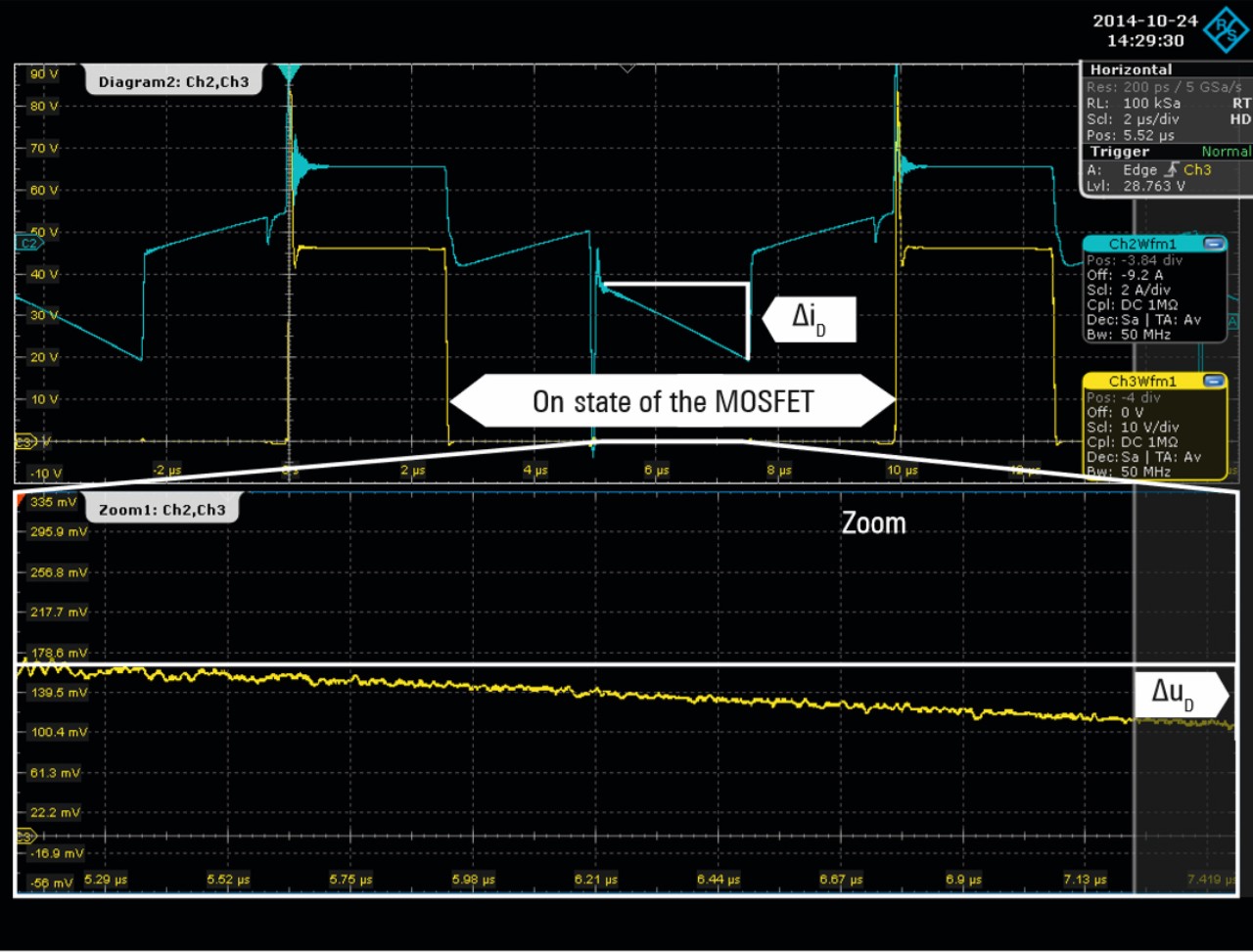16-bit high definition oscilloscopes for accurate measurements in electric and hybrid cars
The power efficiency of the drive electronics is a key parameter when developing electric drive systems. The conduction loss of the electric drive electronics is of special interest. One important parameter for determining the conduction loss is the RDS(on) of the MOSFET. When a switching MOSFET is off, it has a high drain-to-source voltage, but when it is turned on, the voltage drops to just a few hundred millivolts. A highresolution oscilloscope is needed to measure these low voltages. Probe compensation and correct probing are also vital for accurate RDS(on) measurements.









